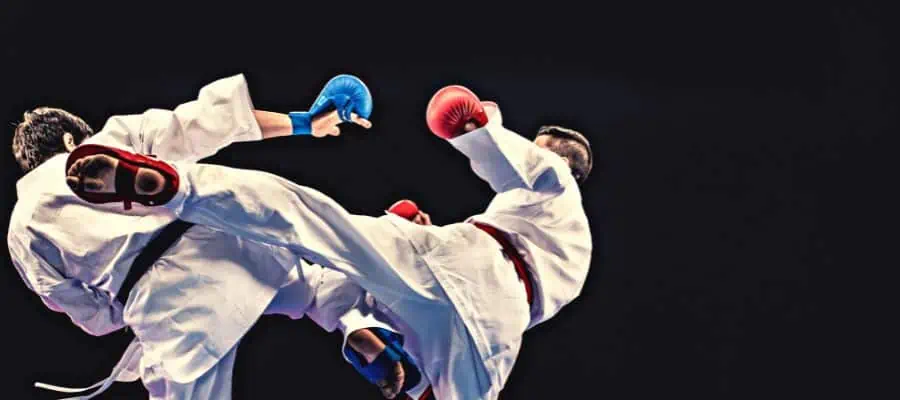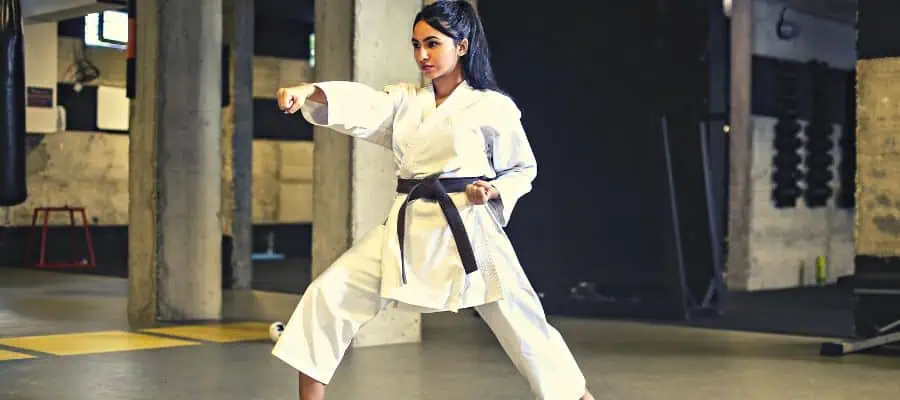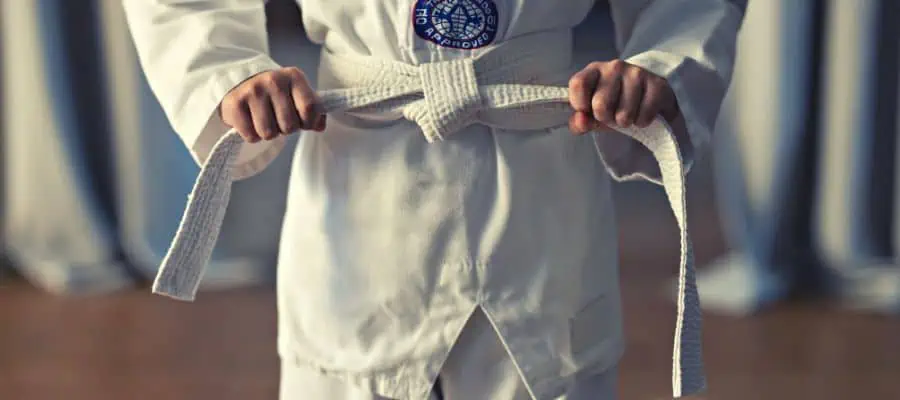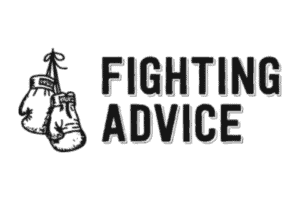Karate is a martial art that uses all body parts for self-defense without using any weapons other than your own body. Karate in Japanese means empty hand. Participants practice hand and foot techniques, attacks, and defenses according to the same principles that make attack and defense very effective. There are over 70 styles of karate, with Shorin Ryu and Kyokushin being two of those styles.
So what is the difference between Shorin Ryu and Kyokushin Karate? Kyokushin is a modern and “harder” form of karate that supports heavier hits in full-contact sparring with more rigorous training methods. Shorin Ryu practices more traditional training methods with a strong emphasis on kata and a self-defense system that requires incapacitating the opponent in the shortest possible time.
Karate is a sport with its roots in the 13th century. Many students and masters went through the valley of karate, and they helped the development of this sport to be as widespread as it is today. It has spread into many styles, and each of them has its advantages and disadvantages as well as its own story and principles.
The Difference Between Shorin Ryu And Kyokushin

All karate styles have their similarities and differences. To properly understand the difference, it is necessary to pay attention to details in which they differ, such as the origin, access to combat, execution of techniques, methods of training, and belt rankings.
Shorin Ryu Karate
Shorin Ryu karate is one of the most traditional and oldest karate styles. It is a fusion of many native martial arts and southern Chinese kung fu. This style is designed and adapted for self-defense purposes only. The charm of this style is in the repetition, improvement, and performance of the kata.
Shorin Ryu Origins
The Shorin Ryu style originated around 1929 in Okinawa, Japan, like most styles of karate. Its creator is believed to be “Bushi” Sokon Matsumura. His best student Anko Itosu continued to use the teacher’s practice and modified it, further evolving this style. In 1933, Chōshin Chibana contributed to the development and gave the name “Shorin Ryu” because of its samurai roots and to differentiate it from other existing styles.
Shorin Ryu Katas
Kata is like a fighting textbook that has been tested to be effective in real-life confrontations. It is practiced at close and long distances with the finesse of grappling, throwing, kicks, punches, and joint locks. Katas have been passed down from generation to generation.
Most of today’s katas in Shorin Ryu came from the founder Matsumura himself. The goal of Shorin Ryu kata is for the practitioner to memorize body movements in a pattern that will be effective for his self-defense. This style has 18 katas. Each one has a story behind its creation, characteristics, practice, and purpose. It takes years to learn and even more years to perfect.
| Fukyugata I & II |
| Pinan I – V |
| Naihanchi I – III |
| Ananka |
| Wankan (Okan) |
| Rohai |
| Wanshu |
| Passai |
| Gojushiho |
| Chinto |
| Kusanku |
Shorin Ryu Fighting System
The strategic goal of Shorin Ryu Karate is to end the confrontation quickly with the help of fast and strong kicks and punches. This style features a mix of blocks and taisabaki (body shifting), which allows for shifting away from your opponent to counterstrike.
The very effectiveness of Shorin Ryu is in the simplicity of movements and techniques in its own style. The elements of combat tactics that are used are speed, timing, controlling the distance, counterattack, and power. Knowing the correct distance from which you will be effective is necessary.
In the Shorin Ryu style, this means being at a distance from your opponent, where you only need one step to attack and one step to retreat and defend. Your speed is your advantage. In terms of speed and timing, you need to be faster than the enemy to always be one step ahead of him due to executing a technically and time-correct move that will incapacitate the opponent.
When we add body shifting to that, we get an effective counterattack. That is, finding an adequate angle where your attacker is vulnerable and you are out of his danger distance. This requires repetition of kata, footwork, and distance training to achieve the best possible performance.
As for power, it is necessary to develop wasIkken Hissatsu. It is an Okinawan saying to “kill with one blow” to disable the opponent as quickly as possible. The way of practicing better impact of that one shot is hitting the makiwara or striking post, over and over.
When you combine all the mentioned elements, you get an effective technique for self-defense. The goal of this system can be briefly reflected in the words of the great Matsumura when he said, “Wait for the opponent to commit himself and make a mistake – then counterattack.”
Shorin Ryu Ranking System
You can follow the progress in your work through the belt ranking system. It takes four to six active years to reach a black belt, and once you get there, your adventure doesn’t end there. In front of you will be Dan’s grades that rank black belts, and there are eight of them. To reach the 8th, one must invest at least another five to ten years of effort.
| White Belt (Beginner) |
| Yellow Belt (8th Kyu) |
| Yellow Belt (7th Kyu) |
| Orange Belt (6th Kyu) |
| Green Belt (5th Kyu) |
| Purple Belt (4th Kyu) |
| Brown Belt (3rd Kyu) |
| Brown Belt (2nd Kyu) |
| Brown Belt (1st Kyu) |
| Black Belts |
Kyokushin Karate
Kyokushin karate is a full-contact martial sport based on the performance of practical techniques, the philosophy of hard training, discipline, and self-improvement. It is known as one of the “harder” styles of karate. It consists of kicks and punches to the opponent’s legs, body, and head (except punches to the head). Kyokushin allows the so-called Kumite (sparring), and its aim is to depict a realistic unarmed conflict.
Kyokushin Karate Origins
Sosai Masutatsu Oyama is the creator of this style who, at the age of 25, dedicated his life to developing karate and transmitting knowledge. He spent years separated from society, lived in mountains and temples, and devoted himself completely to mental and physical training for better understanding.
After his isolation, Masutatsu went on a martial arts tour of Britain, Asia, and the rest of the world to compare his style to other martial arts. When he returned after a successful tour, he opened his Dojo in 1953 Tokyo, and most of his students were practitioners of other martial arts.
Oyama used it for knowledge and evolution of Kyokushin. He compared their styles and took valid techniques and concepts from other sports and thus laid the foundations of his karate style. The system itself was invented in 1960.
Kyokushin Katas
Kata in Kyokushin combines blocks, punches, and kicks from one or more positions. It includes moving sideways, forwards, and backward. As well in Kyokushin, the traditional techniques used for fighting are practiced through the repetition of kata. This way, we achieve better balance, breathing, concentration, and mental and physical readiness. The most commonly practiced katas are divided into:
| Northern Kyokushin Katas | Southern Kyokushin Katas |
|---|---|
| Taikyoku Sono Ichi | Sanchin No Kata |
| Takiyoku Sono Ni | Gekisai Dai |
| Taikyoku Sono San | Gekisai Sho |
| Pinan Sono Ichi | Tensho |
| Pinan Sono Ni | Saiha |
| Pinan Sono San | Seienchin |
| Pinan Sono Yon | Seipai |
| Pinan Sono Go | Garyu |
| Yantsu | |
| Tsuki No Kata | |
| Kanku | |
| Sushiho |
Kyokushin Fighting System
Kyokushin consists of five elements kihon, ido geiko, kata, kumite, and iken. Kihon is the basic technique of kicks, punches, and blocks, and Ido Geiko is learning the basic movements. Kyokushin’s fighting approach consists of aggressiveness, speed, power, and damage.
Kyokushin has no grappling component but builds mentally and physically strong people. In addition to kicks and punches, it allows knee and elbow strikes, delivered with full force during sparring. The goal of kumite is to maximally damage the opponent with techniques from any angle, range of motion, and power possible.
As for the approach to training itself, the training of this discipline is hard on the body due to a lot of sparring and physical contact without protective equipment. The word Kyoku itself means “absolute” or “ultimate,” which very well explains the demanding training process, unlike other styles.
Exceptional emphasis should be placed on mental strengthening and building pain tolerance, aimed at pushing the limits of your endurance. It teaches you to function through pain and discomfort, which can have benefits in life outside of training. That mental training is called Iken, and its goal is the unification of body and mind.
Kyokushin Ranking System
Another slight nuance in which Kyokushin differs from the Shorin Ryu style is the belt ranking system. It consists of eleven belts and a black belt that goes up to 10th Dan. Students are awarded a higher degree when demonstrating katas, techniques, and strikes they worked hard to master.
| White Belt (11th Kyu) |
| Orange Belt (10th Kyu) |
| Orange Belt (9th Kyu) |
| Blue Belt (8th Kyu) |
| Blue Belt (7th Kyu) |
| Yellow Belt (6th Kyu) |
| Yellow Belt (5th Kyu) |
| Green Belt (4th Kyu) |
| Green Belt (3rd Kyu) |
| Brown Belt (2nd Kyu) |
| Brown Belt (1st Kyu) |
| Bleck Belts |
Is Kyokushin Karate Effective In A Street Fight?

Given that Kyokushin is one of the most brutal forms of karate, it is considered effective for self-defense purposes.
The benefit of this style is that they teach you one thing you don’t have in other martial arts: striking with your bare hands and feet without protective gear. It will make you durable so that you won’t even feel the blows in the adrenaline rush.
Another positive point is that the Kyokushin style allows for a quick finish to the opponent, which is the goal in a street fight. True, the lack of grappling and punches to the head are downfalls, but that’s something you can learn outside of the Dojo if your primary goal is to be able to defend yourself.
Is Shorin Ryu Karate Effective In A Street Fight?

Shorin Ryu is a slightly gentler form of karate for self-defense. The lack of heavy sparring can be a bit of a problem if you haven’t tested your techniques on an opponent who is resisting you. In that case, the question is whether your technique is even effective.
On the other hand, Shorin Ryu also has its benefits for street fights. Primarily, this form of karate was created for self-defense. It contains components of grappling, throwing, joint locks, counterattacks, intercepting the opponent’s attack, looking for angles where you are out of danger, and finishing the aggressor in one blow.
All of this can come in handy in self-defense. But it all depends on the person and the way they approach training. There is always a case where you can adapt your martial style to self-defense and learn something extra outside of your discipline. Every martial sport can be effective if you know how to transfer it to the street.
Which Karate Style Should You Choose?

Although it all depends on your goals, this ancient skill is full of positives. Every minute you invest in training will undoubtedly pay off. There are many styles, and if you have decided to enroll in karate classes, it is best to look at what each style offers to find what suits you best.
Talk to the instructors, visit the dojos, and get information. Suppose you want to train purely for fight or self-defense. In that case, it is advisable to choose Ashihara or Kyokushin because of the realistic combat you can encounter in the real world.
If you want to lose weight, get in shape, do a favor to your physical health, and strengthen your mental health. If you don’t want to expose yourself to injuries, opting for a milder style such as Shorin Ryu would be wise.
Conclusion
From all this, we can conclude that Kyokushin creates seriously tough fighters. As for the effectiveness of a real fight, it is in the first place compared to other types of karate. If you like rougher contact, pain, and killer workouts, Kyokushin is your style. Shorin Ryu is a great form of karate with great benefits for your body and mind. It is effective for self-defense, and like any sport, it will keep you young and help you live to old age with a healthier body. In any case, both styles have health benefits, build discipline and healthy habits, and being a member of the Dojo will give you a sense of community and a sense of belonging somewhere. Certainly, if you decide to start training in any form of karate, you will not regret it.
Recent Posts
For those with interest in Karate, you may have heard of Goju-Ryu and Kyokushin Karate. They have unique features that distinguish them from each other, which can prove valuable for...
Karate has proven to be a significant force in mixed martial arts. The UFC has witnessed some remarkable karate fighters. While some karatekas have brought impeccable timing and damaging strikes,...
